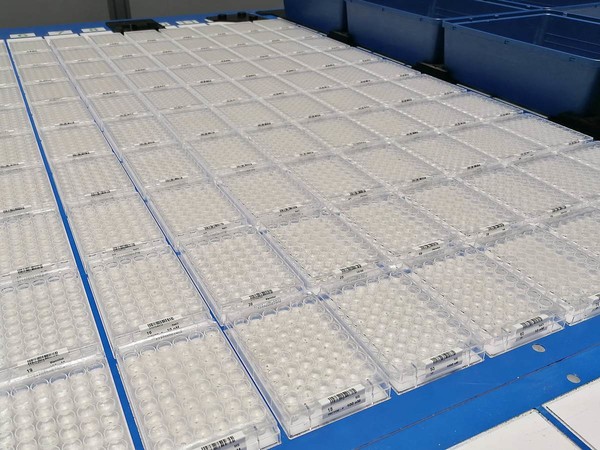A total of 11 biostimulants obtained by hydrolysis of plant waste material and their effect on the model plant Arabidopsis thaliana were studied by researchers from CATRIN, Palacký University, PSI and Italian universities. By combining automated large-scale plant phenotyping with non-targeted metabolomics, they not only described the functions of individual biostimulants but also revealed their mechanisms of action. The work was published in Frontiers in Plant Science.
“In this paper, we show how plant phenotyping has been linked to the study of the action of biostimulants in an attempt to explain their mechanism of action by combining omics approaches, specifically phenomics and metabolomics. This linkage is not very common yet in the world of biostimulants, and we with our Italian colleagues are the ones using it the most. Together with us, Italy is one of the pioneering countries using plant phenotyping in biostimulant research and development,” said Lukáš Spíchal, one of the authors of the paper.
The researchers used a high-throughput screening approach based on simple RGB imaging combined with non-targeted metabolomics. They investigated the effect of biostimulants on Arabidopsis thaliana grown under optimal conditions and under salt stress, which in nature is associated with prolonged drought. The traits related to growth and development were evaluated by the experts during and at the end of the growth period. Of the 11 biostimulants, they identified two highly effective growth regulators that alleviate plant stress.
“This is a demonstration study where we have tried the procedures on a model plant. Subsequently, we intend to apply this approach to specific agricultural crops,” Spíchal outlined the following steps.
The research is a continuation of a long-term collaboration with PSI (Photon Systems Instruments) within the CzPPN (Czech Plant Phenotyping Network), which in this case concerns the use of phenotyping technologies for large-scale testing of biostimulants. Italian colleagues contributed with experience in non-targeted metabolomics.
The use of plant biostimulants contributes to sustainable agriculture and their recovery by recycling waste products from industrial crop processing is in line with the concept of circular economy. Interest in biostimulants and related research has been expressed by industrial partners themselves. “Industry has asked for the help of science. The methods we are developing are also needed by companies to eventually certify their products for use on the European market,” Spíchal concluded.
Sorrentino M., De Diego N., Ugena L., Spíchal L., Lucini L., Miras-Moreno B., Zhang L., Rouphael Y., Colla G., Panzarová K.: Seed Priming With Protein Hydrolysates Improves Arabidopsis Growth and Stress Tolerance to Abiotic Stresses. Frontiers in Plant Science 2021, 12:626301. IF=5,753
DOI: 10.3389/fpls.2021.626301
